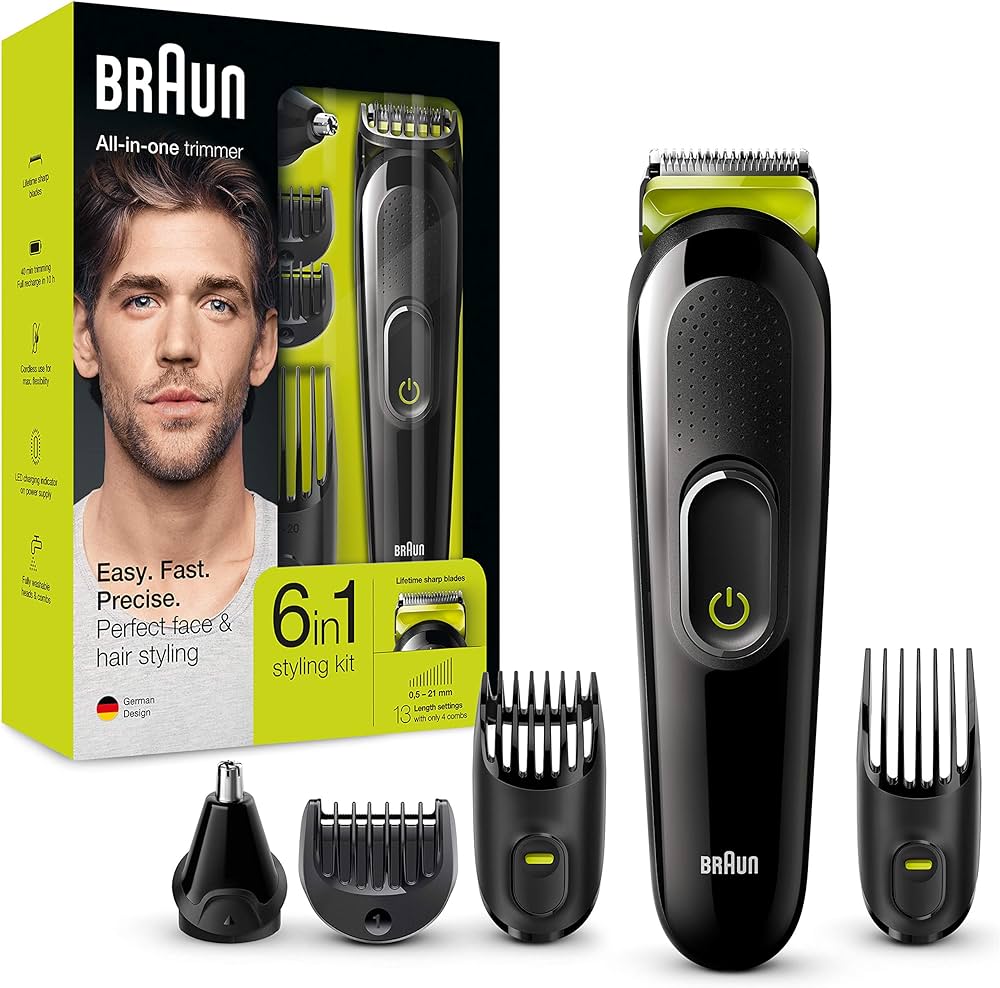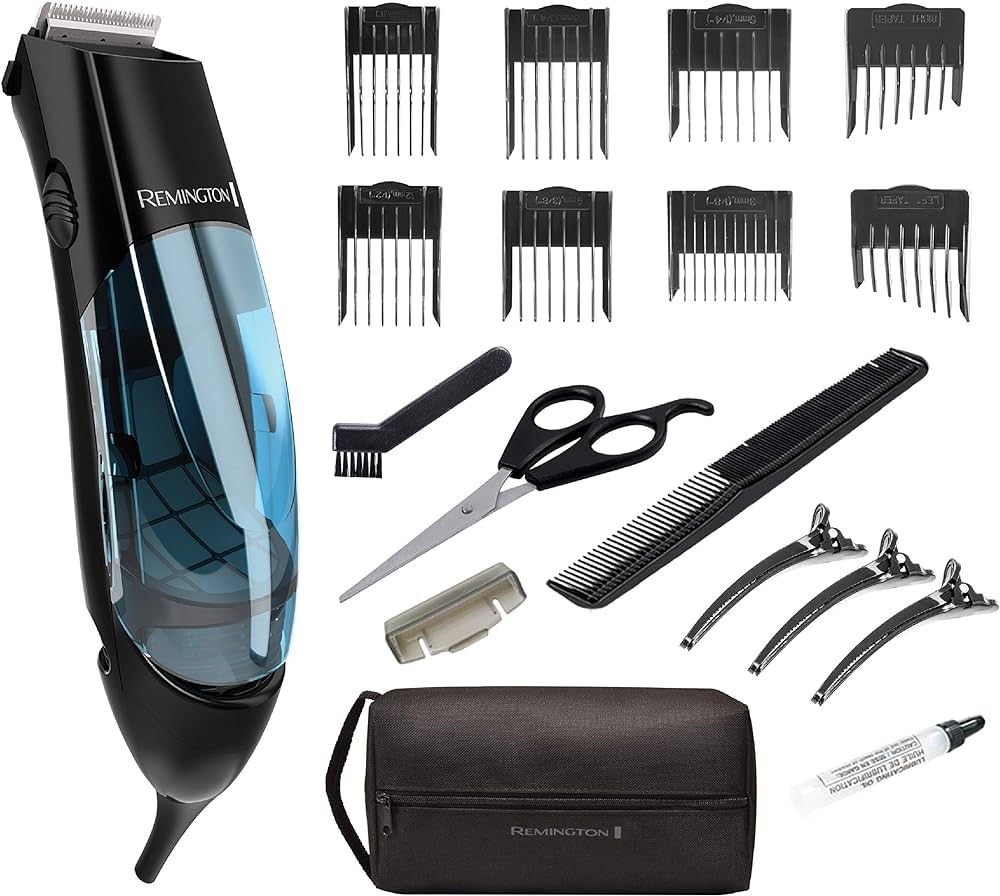Introduction
Hair clippers are commonly used for various grooming purposes, including trimming both hair and beards. The lever found on many hair clippers is a versatile tool that can aid in achieving different cutting lengths. In this article, we will explore the functionality of the lever on hair clippers and whether it can be used for trimming beards effectively. Specific details and considerations will be provided to address this topic.

Can the lever on hair clippers be used for trimming beards?
Understanding the Lever on Hair Clippers
The lever on hair clippers is typically located at the side or back of the clipper’s housing. Here’s how it works:
Closed Position: When the lever is in the closed position, the blades are closer together, resulting in a shorter cutting length.
Open Position: Moving the lever to the open position increases the gap between the blades, allowing for a longer cutting length.
Beard Trimming Considerations
While the lever on hair clippers is primarily designed for hair cutting, it can also be used for beard trimming. However, there are some important considerations to keep in mind to achieve optimal results. Here’s what you should consider:
Adjustability: The lever on hair clippers offers limited adjustability in cutting lengths. While it can provide versatility for hair cutting, it may not offer the level of precision required for beard trimming, especially for shorter or more detailed styles.
Beard Length: The lever on hair clippers may be suitable for maintaining longer beard lengths or achieving a uniform trim throughout the beard. However, it may not be ideal for shorter beard styles that require more precision and control.
Attachment Combs: To achieve more precise beard trimming, it is advisable to use attachment combs that offer specific cutting lengths. These combs can be attached to the clipper blades, providing more control and accuracy in achieving desired beard lengths.
Blade Angle: When using the lever on hair clippers for beard trimming, pay attention to the angle at which the blades contact the beard. Adjust the clipper’s position and angle to ensure a smooth and even cut, minimizing the chances of uneven or patchy results.
Beard Trimming Techniques
To effectively use the lever on hair clippers for beard trimming, it is important to follow specific techniques to achieve the desired result. Here are some techniques to consider:
Comb and Trim: Before using the clipper, comb your beard in the desired direction to ensure the hair is evenly distributed. Start by trimming with the lever in the closed position to achieve a shorter initial length.
Gradual Length Increase: To achieve a more tapered or graduated look, gradually increase the cutting length by adjusting the lever to a more open position. This can help create a more natural and blended appearance.
Maintenance Trimming: Once you have achieved your desired beard length, you can use the lever on hair clippers to maintain the length by adjusting it to the appropriate position. Regular maintenance trimming can help keep the beard looking neat and well-groomed.
Final Touches with Scissors: For more intricate or detailed trimming, especially around the mustache or sideburns, it may be necessary to use scissors in addition to the clipper. Scissors allow for more precise shaping and trimming in smaller areas.
Professional Assistance for Beard Trimming
While the lever on hair clippers can be utilized for beard trimming, it is important to acknowledge the limitations and the potential need for professional assistance. A barber or a professional stylist can offer expertise in beard shaping, provide guidance on suitable techniques, and ensure optimal results.
Maintenance and Care for Clipper Blades
To ensure optimal performance of the lever and the overall effectiveness of the clippers for beard trimming, proper maintenance and care of the clipper blades are essential. Consider the following tips:
Regular Cleaning: After each use, remove any hair clippings and debris that may have accumulated on the blades. Use a small brush or a toothbrush to gently clean between the teeth and other hard-to-reach areas. Proper cleaning prevents clogging and maintains cutting efficiency.
Blade Oil Application: Apply a few drops of clipper oil to the blades after cleaning to lubricate and protect them. This helps reduce friction and heat generation, enhancing the longevity and performance of the clipper blades.
Blade Sharpening: Over time, clipper blades can become dull and require sharpening. If you notice a significant decrease in cutting efficiency or the blades are not producing desired results, consider professional sharpening or learn how to sharpen the blades yourself. Sharp blades ensure better cutting performance.
Replacement: If the blades are damaged, worn beyond repair, or no longer cutting effectively even after sharpening, it may be necessary to replace them. Refer to the manufacturer’s instructions or seek professional guidance to ensure you select the correct replacement blades for your clippers.
Personal Safety and Hygiene
While using clippers for beard trimming, it is crucial to prioritize personal safety and hygiene. Consider the following:
Clean Clippers: Keep the clippers themselves clean and free from any residue or buildup. Periodically disinfect the clipper housing and handle to maintain hygiene and prevent the spread of bacteria.
Skin Preparation: Before trimming your beard, ensure your skin is clean and dry. Avoid trimming over irritated or inflamed skin, as it can cause discomfort or further irritation.
Personal Use Only: It is advisable to use clippers for personal use only to maintain proper hygiene. Sharing clippers can spread bacteria or infections, increasing the risk of skin issues. If using clippers in a professional setting, ensure proper sanitation between clients.
Blade Guard Attachment: When using clippers for beard trimming, attach a suitable guard to prevent accidental cuts or nicks. Avoid placing the blades directly against the skin without a guard, especially in sensitive areas.
Trial and Error for Optimal Results
Achieving the desired beard trimming results with clippers and the lever may require some trial and error. Every person’s beard is unique, and different techniques and adjustments may be needed to achieve the desired length and shape. Consider the following:
Experimentation: Don’t be afraid to experiment with different cutting lengths and techniques to find what works best for your beard and desired style. Take note of what adjustments, lever positions, and trimming methods provide the most satisfactory results.
Practice: With practice, you will develop better control and familiarity with the clippers, further enhancing your ability to achieve the desired beard trimming results. Be patient, and don’t get discouraged if it takes time to master the technique.
Adaptation: As your beard grows and changes, consider adapting your trimming techniques accordingly. Adjust the lever position, explore different attachment combs, and incorporate other tools as necessary to maintain the desired length and shape.
Conclusion
The lever on hair clippers can be used for beard trimming, but it is important to consider its limitations and employ specific techniques for optimal results. While the lever offers adjustability in cutting lengths, it may not provide the precision required for shorter or more intricate beard styles. Using attachment combs, employing appropriate techniques, and combining clipper trimming with scissors can help achieve desired beard lengths and shapes.
Remember, beard trimming requires attention to detail, careful blade angle and positioning, and regular maintenance. If you are unsure or seeking a more complex beard style, it is advisable to seek professional assistance from a barber or a stylist. Their expertise can ensure precise and tailored beard trimming to achieve your desired look.

Leave a Reply